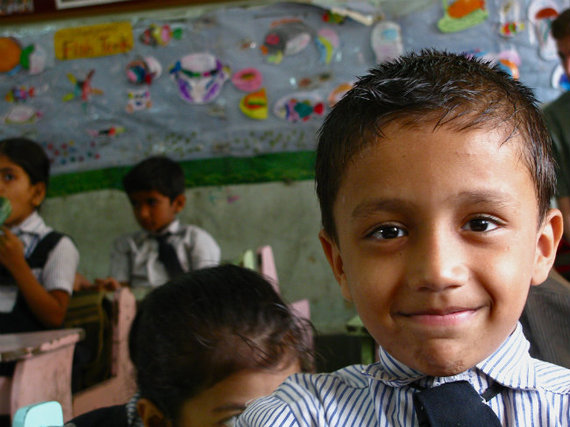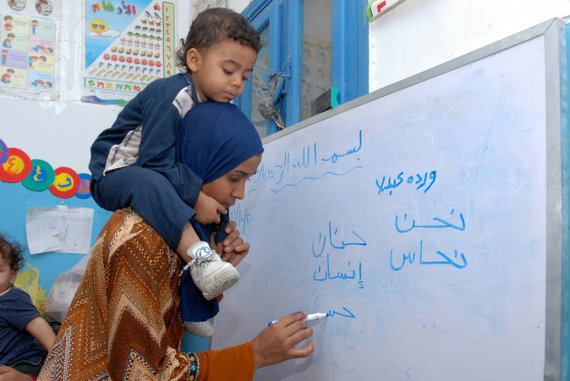775 million people around the world don't know how to read or write, and nearly two-thirds of them are women. Literacy is a fundamental human right, one that opens doors to other rights, to empowerment and to integration; it is essential for other forms of learning, for health and security, and for personal development. As the examples from Mumbai, Dhaka, Bogotá, São Paulo and Cairo show, literacy is more than just reading and writing: It also includes digital literacy, as well as a culture of reading. The following initiatives show a variety of approaches to combatting illiteracy, including national campaigns, the diagnosis of learning disabilities, and digital literacy programs. Read on to learn more, and then join the conversation on URB.im.
Many children in Mumbai have undiagnosed learning disabilities, with literacy skills jeopardized by the lack of support for the type of education they need. Non-profit Mimaansa has set out to provide exemplary remediation and counseling services to underprivileged students with learning disabilities. They train teachers and increase awareness among parents and school administrators to help disabled children. "Parents are happy with the performance of their children. And last academic year, we had 66 students fare better in math and 25 who showed progress in language," says founder Poojaa Joshi of the program's early achievements. "One of the biggest challenges is convincing teachers and parents that their child is normal but just has a different style of learning."
In Dhaka, basic education literacy has not shown to increase inclusion in the labor force. The Post Literacy and Continuing Education for Human Development project addresses this issue through educational programs and skills development trainings. Learning centers are established near the target communities, and a number of NGOs are appointed to execute the program in order to foster self-employment. By improving their literacy skills, participants are able to perform tasks like keeping track of the family's income and communicating effectively. The program also provides a variety of trade training (such as radio, television and mobile phone servicing, welding, tailoring, and embroidery), on the basis of existing and future demand from the local labor and industrial market.
The rate of digital illiteracy is as high as 50 percent in Bogotá. To tackle this problem, an alliance between the City of Bogotá and the Empresa de Telecomunicaciones de Bogotá (ETB) has created several training programs. Fifteen "Interactive Gateways," multimedia hubs equipped with Internet-enabled computers, are used for training. These hubs, created by ETB, are located in the neighborhoods with the greatest need. The program targets micro-business and micro-entrepreneurs; the free courses are open to any micro-business owner in the agro-industry, services, industrial and leather sectors. More than 10,000 people have already used this course to improve their ability to use technology and computers.
Although the literacy rate in São Paulo is 96.6 percent, the city lacks a culture of reading, especially within low-income groups. This is why the Municipal Education Secretariat launched the Minha Biblioteca initiative (My Library) in 2007, to promote a culture of reading among public school students. The program currently benefits more than 550,000 students by providing them with two new books each school year (many of these children have never owned books or have had very limited access to books beyond the ones they can use temporarily during school hours). Minha Biblioteca also organizes reading sessions, discussions about literature, and journal readings. Other efforts include encouraging each public school to have a "reading room," training teachers to guide reading and writing sessions, and promoting reading activities in the household. And to scale up the promotion and reach of the reading culture beyond children, the Secretariat of Culture has established a series of public libraries and "reading points" throughout the city.
Government figures estimate that there are 17 million Egyptians who cannot read and write. In late 2011, Vodafone Egypt partnered with the Life Makers Association and UNESCO under a joint campaign titled "Knowledge is Power." The campaign aims to eliminate illiteracy in Egypt by 2017 by providing classes that teach basic reading, writing, and arithmetic skills, as well as new technologies such as Java, Android, and iOS. As of mid-2013, the "Knowledge is Power" classes had registered 127,315 illiterate people, of whom 92,416 have passed the program's primary literacy exam. Vodafone Egypt CEO, Hatem Dawidar, summed it up quite well: "Through literacy we are accomplishing two things, development and democracy."
Do you know of other solutions to help the urban poor learn how to read, write, and use technology? Join us on URB.im to share your thoughts.
Photo credit: Satish Krishnamurthy and Vodafone Egypt Foundation

